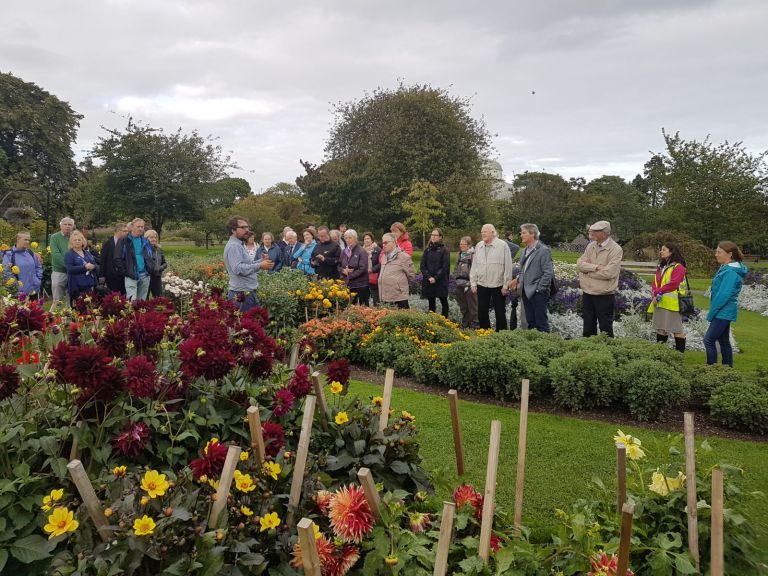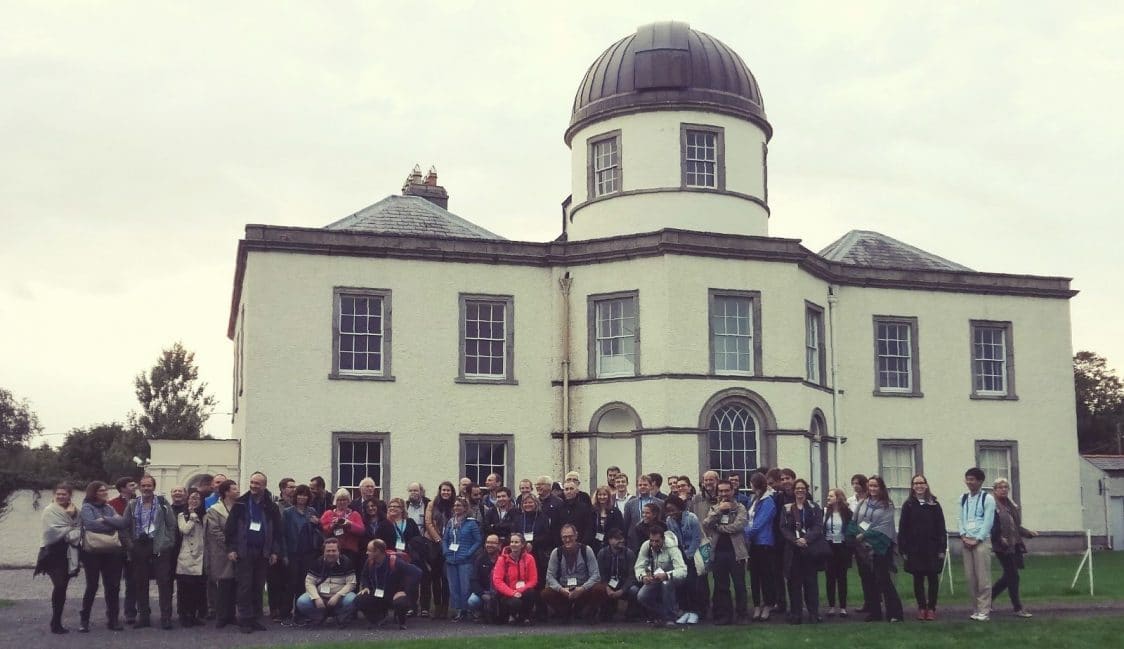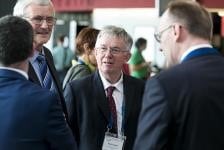Reflections by the Irish Meteorological Society on hosting EMS2017 in Dublin
Paul Halton, chair of the local organising committee for the EMS2017, answers questions from the editorial team.
When did IMS bid to host the EMS conference?
Preparations began in the first half of 2012. The completed IMS bid was submitted to the EMS secretariat in May 2013, just ahead of a scheduled meeting of the EMS Committee on Meetings (CoM).
The IMS Secretary had invited quotations from 17 potential venues in Ireland. The responses were evaluated against a number of criteria including cost, availability early in September 2017, location, accessibility, transport connections, venue capacity, nearby accommodation and catering facilities.
Each venue was also provided with a requirements matrix and invited to provide details using criteria specified by EMS and Copernicus Meetings, the Professional Conference Organisers (PCO) engaged by EMS. With reference to the detailed evaluation criteria, the tender provided by DCU/Helix was the one that met most of the relevant requirements at the lowest cost and was therefore selected as the preferred venue for inclusion with the IMS bid documentation.
In May 2013, IMS, in collaboration with Met Éireann and Fáilte Ireland, formally submitted a bid nominating DCU/Helix as the preferred venue to host the EMS Annual Meeting in September 2017. In November 2013 representatives of EMS and Copernicus Meetings made a site visit to Dublin to inspect the venue facilities and capacity to hold the conference.
What involvement did IMS have in the running of the conference?
EMS has continued to engage professional conference organisers Copernicus Meetings, based in Germany, to run the annual conference on their behalf with help from the local host society.
Copernicus Meetings are experienced in organising and running large international conferences and exhibitions worldwide. From May 2014 to September 2017, IMS and Met Éireann representatives regularly liaised with the EMS secretariat and the Copernicus Meetings regarding the timeline for the local arrangements to be put in place for the various aspects of the EMS conference week in Dublin.
Can you say something about the side events organised by the Irish hosts?

From the outset the IMS local committee were keen to ensure that potential conference participants would be attracted to come to Ireland because of the interesting variety of side events that were provided in addition to the main programme for the conference. The following side events were jointly organised.
- The Irish Marine Institute generously provided one of their weather observing buoys as a centrepiece and focal point on the plaza in front of the Helix Conference Centre on DCU campus;
- The newly formed Met Éireann ISOBARS Choir sang a nice selection of songs at the Icebreaker event;
- AGMET-IMS Outreach Event at the National Botanic Gardens, including a special guided tour of the Phenological Gardens
- Excursion to Met Éireann Headquarters
- Excursion to Dunsink Observatory
- A group of young musicians played a selection of traditional Irish music at the Conference Festa;
- Excursion to Mace Head Atmospheric Research Station, Carna, Galway on the Monday after EMS2017

What was your personal highlight of the conference?
For me there were many highlights during the Conference week – the excitement of meeting and greeting conference participants from many countries, making new friends and renewing old acquaintances, the high quality of the presentations and the large numbers in attendance at all sessions. The positive feedback received from so many participants made it all worthwhile.
We were delighted that the EMS2017 Conference included a dedicated session on Agricultural Meteorology. It was included in recognition of the importance of Ireland’s agricultural sector and its respect internationally. This dedicated session provided a great opportunity to highlight Ireland’s activities in the agrometeorology area.
Another major highlight was the record breaking number of delegates who attended [814], from 46 countries, including 110 participants from Ireland.
In his letter to the Local Organising Committee, the incoming EMS President, Bob Riddaway, wrote “The success of the conference was due in a large part to the outstanding efforts of the Local Organising Committee. The strong involvement of people from IMS and Met Éireann, …, provided logistical support and arranged cultural activities and visits that greatly enhanced the conference.”
Similarly, the Director of Met Éireann, Eoin Moran, in his letter to the IMS President stated that “I would like to acknowledge the initiative taken by IMS in successfully bringing the EMS Conference to Dublin. This move has had a highly positive impact on the promotion of interest in Meteorology in Ireland and the dissemination of meteorological knowledge, pure and applied.”
Can you give any advice to other met societies due to host the conference or that are thinking of putting in a bid?
It is very important to stay positive and stick to the various deadlines along the way. Even though IMS is a relatively small Meteorological Society, we have shown that with dedication and commitment it is possible to bid for and successfully host a large international conference, particularly when you are guided by the EMS secretariat, EMS Council, EMS Programme and Science Committee and Copernicus Meetings who have a vast amount of experience and know-how of running such conferences annually.
It is also very important to obtain the support of the National Meteorological Service and to establish a local organising committee. This committee should be proactive in preparing and planning for the EMS Conference and should be represented by one voice. Therefore, consistent and frequent internal and external communication among all stakeholders is vitally important.
If your organising committee does not have members with sufficient experience of organising large events, make sure you have access to experienced conference organisers for advice and guidance. It is important that your Met Society is represented on the various EMS committees in the years ahead of the conference in your country. For example, in the preceding year leading up to the conference in Dublin the IMS was represented on the EMS Council and the EMS Programme and Science Committee (PSC).
As early as possible, I would recommend that you get in contact with potential sponsoring organisations and get a clear commitment from their senior representatives regarding the levels of support and funding they are willing to provide and be clear about their terms and conditions. Be aware of, and keep up to date with, data protection regulations and good accounting practices.
Finally, make sure that potential speakers and Government representatives are invited well in advance of the conference so that they have an opportunity to give it a high priority in their diary of official engagements.

Minister of State, Damian English (back to camera), being welcomed by IMS President Declan Murphy, IMS-LOC Chairman Paul Halton and Met Éireann Director Eoin Moran just ahead of the Opening session of the EMS2017 Conference on Monday 4th September 2017 (photo by A. Rowlette)


Kommentare sind geschlossen.